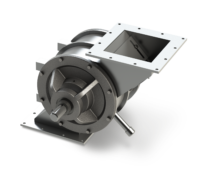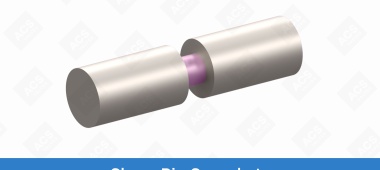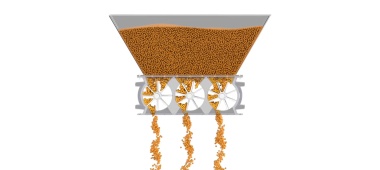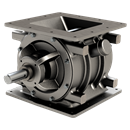Why we recommend ACST-4 shaft seals for valves

Not all seals are created equal. For example, baby seals are cuter than the 90s musician Seal, though neither of them knows much about rotary airlock valves.
Thankfully, you have us. If you’ve ever wondered whether you can get more bang for your shaft seal buck, we’re here to confirm that you can. It’s all about reducing unnecessary maintenance and extending the lifespan of your valve.
Shaft seals for rotary valves: A quick breakdown
Shaft seals are one of the key rotary valve accessories you should always have on hand. Compared to other parts, they must be replaced more frequently to keep your valve sealed (as the name suggests) and minimize the risk of dust explosions. That’s why two shaft seals always come packaged in our NFPA preparedness kit.
You’ll have two shaft seals affixed to the housing of your rotary valve: one at either end of the rotor shaft. They prevent material from leaking out of the rotor pockets and building up around the outboard bearings. They also keep contaminants out of the rotor housing.
A failed shaft seal should be replaced immediately. Without the right seal, you get build-up around the bearings that eventually leads to failure and combustible dust hazards.
With all the material that goes through your valve, it’s normal to see shaft seals wear down every so often. You’ll want to replace them right away to avoid wasted material, NFPA risks and more serious failures in the valve.
The rate at which your shaft seal wears down depends on the abrasiveness of your material, the speed it goes through the valve, and the type of seal you use.
What type of shaft seal should I use?
You have a few options, but let’s start with our favorite. The ACST-4 shaft seal assembly is made up of three quad rings set over a Teflon® sleeve. Teflon is an ideal surface here because it’s self-lubricated and smooth, which creates a more effective seal with the quad rings.
Packing glands are the more traditional (read: old-school) seals. Because they’re made from woven fibers and lubricant, you have to manually push packing glands into the stuffing box. If you’ve spent any time stuffing packing, adjusting pusher plates or cleaning material that has leaked into the shaft seal assembly, you know it can be annoying to work with.
The ACST-4’s sleeve-style design means it lasts longer, doesn’t require adjusting or maintenance, and is more cost-effective in the long run compared to alternatives. It also eliminates static electricity and reduces friction between the four-lobed ring seals and rotor shaft.
What if I need more muscle?
If you’re finding lots of build-up around your shaft seals or they wear down too quickly, consider an air purge connection or mechanical seal. These kits use pressurized air purges to keep materials away from the seal.
Labyrinth and lantern ring air purge seals each use different mechanisms to redirect escaping material back into the rotor housing. Air purge seals also measure air pressure, which makes it easy to detect seal leaks by observing changes in pressure.
Air purge connections tend to be more expensive, but they’re a great option if you’re looking for longevity.
Signed, sealed, delivered
Like most rotary airlock valve accessories, the shaft seal you need depends on your material and setup. The experts at ACS Valves can offer you some guidance or get you set up with an NFPA compliance kit packed with handy replacement parts. Just give us a call!
Categories: NFPA , Durability
Go ahead, make your valve
Put your own spin on our customizable valves to get the best valve for your application, material and industry.

We have a series of items available for quick shipment
Items include: Pressure blower packages, MD Series, S-Pellet Series, Diverter Valves, Flex Tip Series, Screw Conveyors

Please don’t do these 5 things to your rotary valve
Seriously, just don’t do them. We’ll explain why you should avoid these 5 practices to keep your valve’s performance strong, ensure it always runs safely, and maximize its lifespan.

Newsletter
Stay informed on all things ACSWe’ll keep you up-to-date on the latest valve how-tos, handy tips, and news from ACS. It’s totally free and you can opt out at any time.







